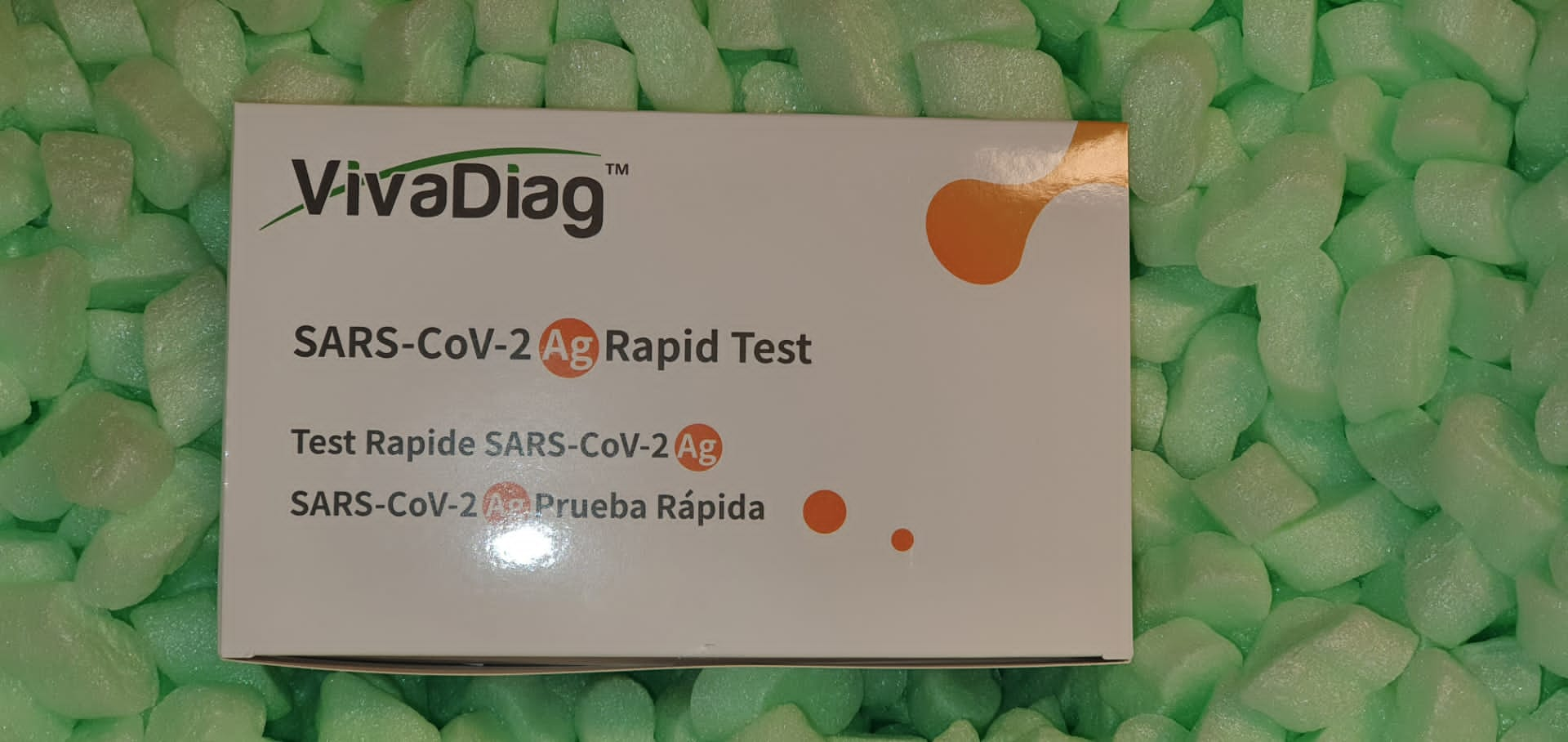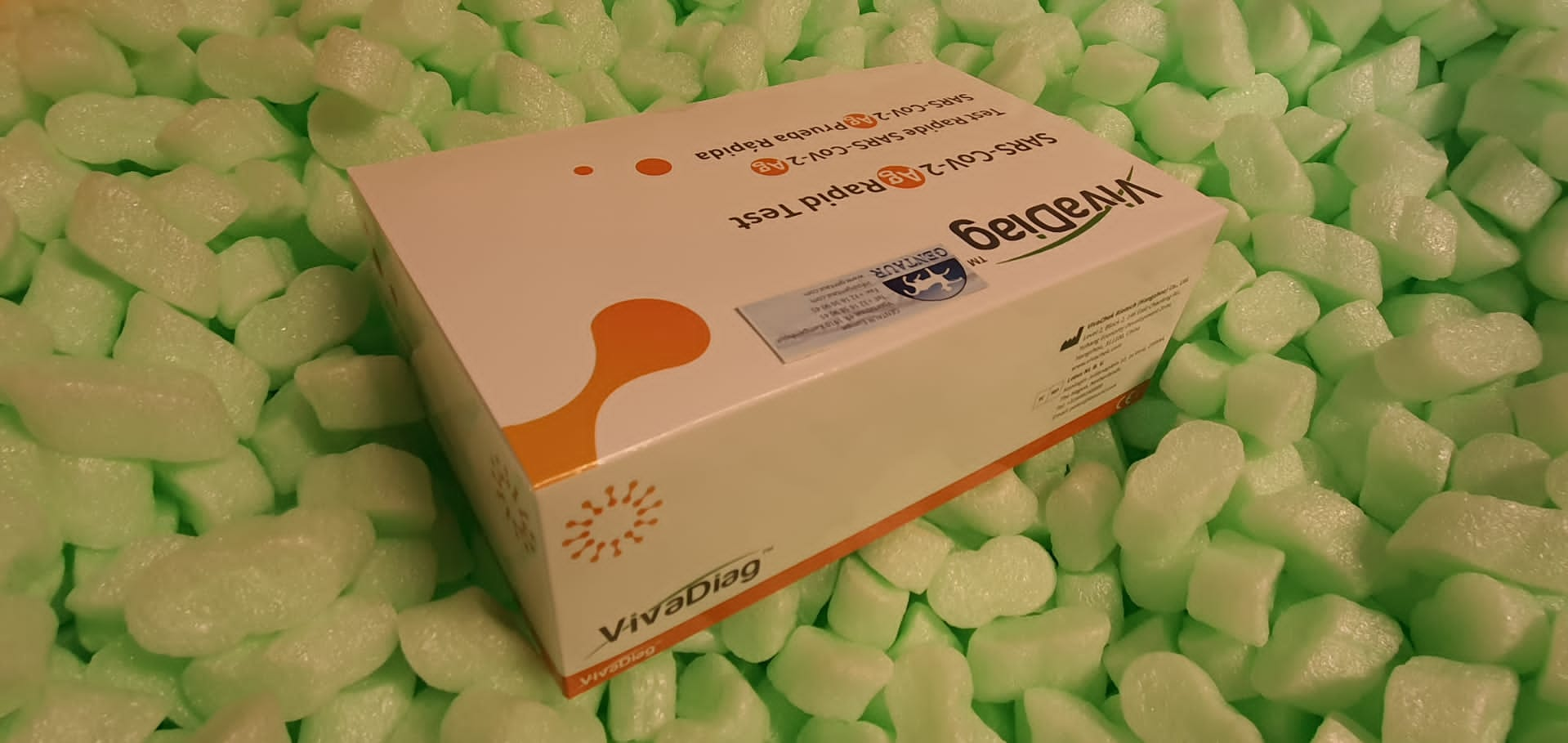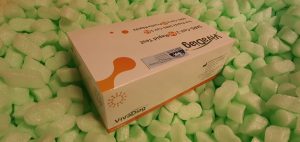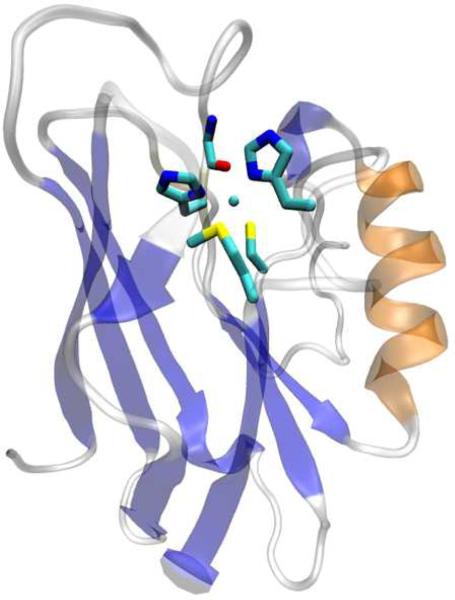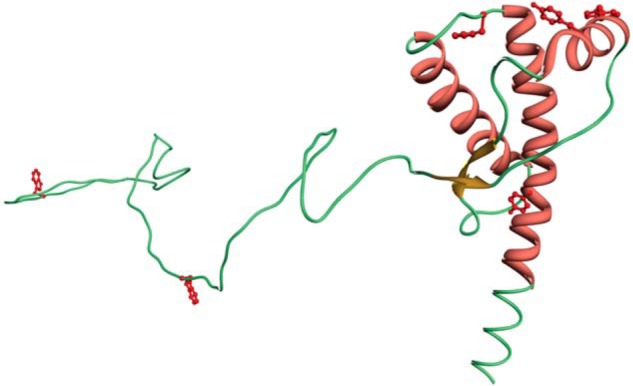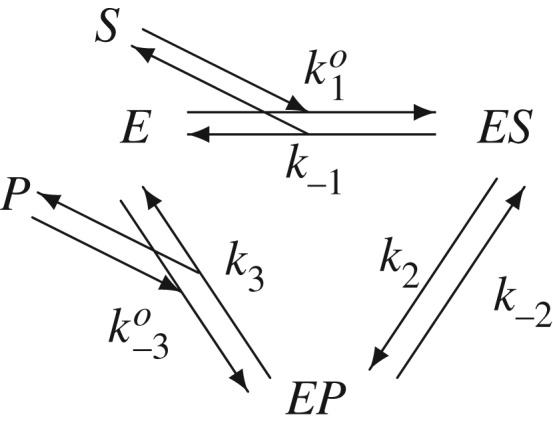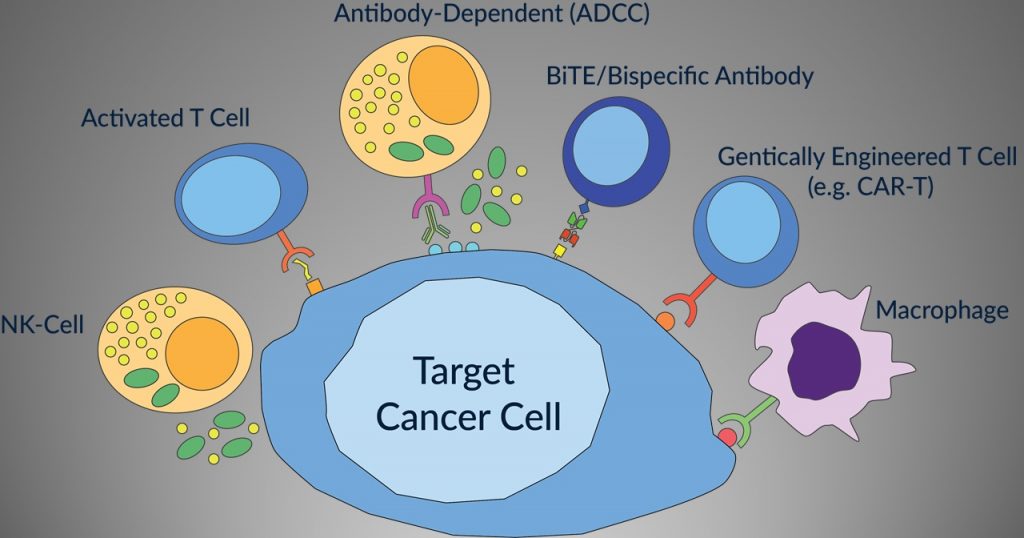Passive all-weather home windows, able to selectively transmitting seen and infrared photo voltaic radiation, may assist in bringing down fossil-fuel vitality consumption globally by lowering the carbon footprint of typical air-conditioning methods for buildings and motor automobiles. Right here, we report on designing metal-insulator-metal thin-films for utility in passive home windows, optimized for various weather conditions. We analyze designs comprising completely different noble metals in addition to their comparatively cheap options. By discovering an optimum alternative of supplies and thicknesses of the metallic and dielectric layers, our lithography-free easy design can present all-weather options for passive home windows with desired seen and infrared transmission/blocking functionality.
Obtained theoretical outcomes agree properly with full-wave simulations. Thus, our proposed designs allow growing low-cost, ultra-thin (thickness: 47-85 nm), polarization-independent, angle-insensitive (as much as 83 deg), and large-area-compatible passive home windows with improved solar-radiation management for various climate/weather conditions. The figure-of-merit calculation reveals that the comparatively cheap metals utilized in our passive glasses can outperform industry-standard industrial glasses and beforehand reported infrared-blocking plasmonic glasses. Setting up a van der Waals heterostructure is a sensible solution to promote the conversion effectivity of photo voltaic vitality.
Right here, we display the environment friendly efficiency of a GeSe/AsP heterostructure in photo voltaic vitality cells primarily based on the first-principles calculations. The digital properties, optical absorption, and optoelectronic properties are calculated to guage the effectivity of the newly designed heterostructure. The outcomes point out that the GeSe/AsP heterostructure possesses a type-II band alignment with an oblique bandgap of 1.10 eV, which enormously promotes the efficient separation of photogenerated carriers. In addition to, an intrinsic electrical discipline is shaped within the route from the AsP to GeSe monolayer, which is helpful to stop the recombination of the photogenerated electron-hole pair.
Concurrently, a powerful optical absorption is noticed within the seen mild vary. The expected energy conversion effectivity (PCE) of the GeSe/AsP heterostructure is 16.0% and may b We assumed photo voltaic publicity profiles primarily based on each day habits for an implanted photo voltaic cell. The output energy was calculated for pores and skin varieties VI and I/II. In comparison with the CSS-BPW, the manufacturing of ingesting water was elevated by 68.57% when utilizing the reflective glass mirrors and 48.57% when utilizing the reflective aluminium foil sheet.
Grain Measurement Influences Activation Power and Migration Pathways in MAPbBr 3 Perovskite Photo voltaic Cells
Ion migration in perovskite layers can considerably scale back the long-term stability of the units. Whereas perovskite composition engineering has confirmed an attention-grabbing device to mitigate ion migration, many optoelectronic units require a selected bandgap and thus require a selected perovskite composition. Right here, we have a look at the impact of grain dimension to mitigate ion migration. We discover that in MAPbBr3 photo voltaic cells ready with grain sizes various from 2 to 11 μm the activation vitality for bromide ion migration will increase from 0.17 to 0.28 eV.
Furthermore, we observe the looks of a second bromide ion migration pathway for the units with largest grain dimension, which we attribute to ion migration mediated by the majority of the perovskite, versus ion migration mediated by the grain boundaries. Collectively, these outcomes counsel the helpful nature of grain engineering for discount of ion migration in perovskite photo voltaic cells. Many researchers are searching for easy and profitable options to extend the output from the photo voltaic distiller. On this analysis work, reflective mirrors and reflective aluminium foil sheet had been mounted on interior surfaces of the single-slope photo voltaic distiller, resulting in extra water manufacturing.
The presence of reflective mirrors and reflective aluminium foil sheet on interior surfaces of the photo voltaic distillate permits the reflection of photo voltaic radiation falling contained in the basin. Experiments had been carried out on three stills: the primary distiller is typical photo voltaic nonetheless with black painted partitions (CSS-BPW); the second distiller is typical photo voltaic nonetheless with reflective aluminium foil sheet partitions (CSS-RAFW); and the third distiller is typical photo voltaic nonetheless with reflective glass mirror partitions (CSS-RGMW). The utmost whole ingesting water productions from the CSS, CSS-RAFW and the CSS-RGMW are 3.41, 5.1 and 5.54 kg/m2, respectively.
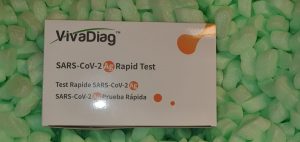
The potential of city distributed photo voltaic vitality in transition economies: The case of Beirut metropolis
On this paper, utilizing Lebanon’s capital, Beirut, as a case research, a strategy is proposed to evaluate the potential for photo voltaic photovoltaics (PV) in city areas incorporating each financial and non-economic components. Using a wealthy spatial dataset of photo voltaic irradiation augmented with electrical energy payments on the constructing stage, the fee and profit of putting in rooftop PV methods for every constructing is estimated. Moreover, incentives and obstacles for adopting these methods are investigated utilizing a probabilistic alternative mannequin. The outcomes present that Beirut metropolis has a possible for distributed rooftop photo voltaic PV to be between 195 and 295 MWp.
Nevertheless, adoption charges are low at 0.49% and 1.23% for residential and industrial buildings, respectively, reflecting the limitation of economic incentives alone to advertise the deployment of distributed renewable vitality methods in transition economies. The influence of various incentive coverage devices and the function of photo voltaic PV in as we speak’s financial disaster in Lebanon is analyzed. The most important influence was achieved by way of eradicating (or decreasing) electrical energy tariff subsidy, though this feature stays extremely constrained by political calculus.
Nucleolar Protein 3 (NOL3) Antibody |
|||
| abx235784-100ug | Abbexa | 100 ug | EUR 577.2 |
Nucleolar Protein 3 (NOL3) Antibody |
|||
| 20-abx114218 | Abbexa |
|
|
Nucleolar Protein 3 (NOL3) Antibody |
|||
| 20-abx004831 | Abbexa |
|
|
Nucleolar Protein 3 (NOL3) Antibody |
|||
| abx004831-100l | Abbexa | 100 µl | EUR 400 |
Nucleolar Protein 3 (NOL3) Antibody |
|||
| abx004831-20l | Abbexa | 20 µl | EUR 175 |
Nucleolar Protein 3 (NOL3) Antibody |
|||
| abx004831-50l | Abbexa | 50 µl | EUR 275 |
Nucleolar Protein 3 (NOL3) Antibody |
|||
| abx013023-100g | Abbexa | 100 µg | EUR 237.5 |
Nucleolar Protein 3 (NOL3) Antibody |
|||
| abx013023-10g | Abbexa | 10 µg | EUR 43.75 |
Nucleolar Protein 3 (NOL3) Antibody |
|||
| abx013023-200g | Abbexa | 200 µg | EUR 312.5 |
Nucleolar Protein 3 (NOL3) Antibody |
|||
| abx235784-100g | Abbexa | 100 µg | EUR 350 |
Nucleolar Protein 3 (NOL3) Antibody |
|||
| abx037829-96tests | Abbexa | 96 tests | EUR 337.5 |
Nucleolar Protein 3 (NOL3) Antibody |
|||
| abx038406-100g | Abbexa | 100 µg | EUR 337.5 |
Nucleolar Protein 3 (NOL3) Antibody |
|||
| abx114218-100l | Abbexa | 100 µl | EUR 612.5 |
Nucleolar Protein 3 (NOL3) Antibody |
|||
| abx210877-100l | Abbexa | 100 µl | EUR 350 |
Nucleolar Protein 3 (NOL3) Antibody |
|||
| abx210877-50l | Abbexa | 50 µl | EUR 250 |
Nucleolar Protein 3 (NOL3) Antibody |
|||
| abx320690-100l | Abbexa | 100 µl | EUR 350 |
Nucleolar Protein 3 (NOL3) Antibody |
|||
| abx320690-50l | Abbexa | 50 µl | EUR 250 |
Nucleolar Protein 3 (NOL3) Antibody |
|||
| abx324845-100g | Abbexa | 100 µg | EUR 250 |
Nucleolar Protein 3 (NOL3) Antibody |
|||
| abx324845-50g | Abbexa | 50 µg | EUR 187.5 |
Nucleolar Protein 3 (NOL3) Antibody |
|||
| abx318527-100l | Abbexa | 100 µl | EUR 250 |
Nucleolar Protein 3 (NOL3) Antibody |
|||
| abx318527-50l | Abbexa | 50 µl | EUR 162.5 |
Nucleolar Protein 3 (NOL3) Antibody (HRP) |
|||
| 20-abx304651 | Abbexa |
|
|
Nucleolar Protein 3 (NOL3) Antibody (HRP) |
|||
| abx304651-100g | Abbexa | 100 µg | EUR 362.5 |
Nucleolar Protein 3 (NOL3) Antibody (HRP) |
|||
| abx304651-20g | Abbexa | 20 µg | EUR 162.5 |
Nucleolar Protein 3 (NOL3) Antibody (HRP) |
|||
| abx304651-50g | Abbexa | 50 µg | EUR 250 |
Nucleolar Protein 3 (NOL3) Antibody (FITC) |
|||
| 20-abx304652 | Abbexa |
|
|
Nucleolar Protein 3 (NOL3) Antibody (FITC) |
|||
| abx304652-100g | Abbexa | 100 µg | EUR 362.5 |
Nucleolar Protein 3 (NOL3) Antibody (FITC) |
|||
| abx304652-20g | Abbexa | 20 µg | EUR 162.5 |
Nucleolar Protein 3 (NOL3) Antibody (FITC) |
|||
| abx304652-50g | Abbexa | 50 µg | EUR 250 |
Nucleolar Protein 3 (NOL3) Antibody (Biotin) |
|||
| 20-abx304653 | Abbexa |
|
|
Nucleolar Protein 3 (NOL3) Antibody (Biotin) |
|||
| abx304653-100g | Abbexa | 100 µg | EUR 362.5 |
Nucleolar Protein 3 (NOL3) Antibody (Biotin) |
|||
| abx304653-20g | Abbexa | 20 µg | EUR 162.5 |
Nucleolar Protein 3 (NOL3) Antibody (Biotin) |
|||
| abx304653-50g | Abbexa | 50 µg | EUR 250 |
Nucleolar protein 58 Antibody (HRP) |
|||
| 20-abx108572 | Abbexa |
|
|
Nucleolar protein 58 Antibody (FITC) |
|||
| 20-abx107151 | Abbexa |
|
|
Nucleolar protein 58 Antibody (Biotin) |
|||
| 20-abx105733 | Abbexa |
|
|
NOP2 Antibody / Nucleolar protein 2 |
|||
| F53988-0.05ML | NSJ Bioreagents | 0.05 ml | EUR 140.25 |
|
Description: Nucleolar protein 2 is an S-adenosyl-L-methionine-dependent methyltransferase that specifically methylates the C(5) position of cytosine 4447 in 28S rRNA (Probable). May play a role in the regulation of the cell cycle and the increased nucleolar activity that is associated with the cell proliferation. |
|||
NOP2 Antibody / Nucleolar protein 2 |
|||
| F53988-0.2ML | NSJ Bioreagents | 0.2 ml | EUR 322.15 |
|
Description: Nucleolar protein 2 is an S-adenosyl-L-methionine-dependent methyltransferase that specifically methylates the C(5) position of cytosine 4447 in 28S rRNA (Probable). May play a role in the regulation of the cell cycle and the increased nucleolar activity that is associated with the cell proliferation. |
|||
Nucleolar Protein 8 (NOL8) Antibody |
|||
| 20-abx324504 | Abbexa |
|
|
Nucleolar Protein 6 (NOL6) Antibody |
|||
| 20-abx301690 | Abbexa |
|
|
Nucleolar Protein 9 (NOL9) Antibody |
|||
| abx034569-400ul | Abbexa | 400 ul | EUR 627.6 |
Nucleolar Protein 9 (NOL9) Antibody |
|||
| abx034569-80l | Abbexa | 80 µl | EUR 343.2 |
Nucleolar Protein 9 (NOL9) Antibody |
|||
| 20-abx211330 | Abbexa |
|
|
Nucleolar Protein 9 (NOL9) Antibody |
|||
| 20-abx124786 | Abbexa |
|
|
Nucleolar Protein 4 (NOL4) Antibody |
|||
| abx235785-100ug | Abbexa | 100 ug | EUR 577.2 |
Nucleolar Protein 6 (NOL6) Antibody |
|||
| abx235786-100ug | Abbexa | 100 ug | EUR 577.2 |
Nucleolar Protein 6 (NOL6) Antibody |
|||
| abx235787-100ug | Abbexa | 100 ug | EUR 610.8 |
Nucleolar Protein 8 (NOL8) Antibody |
|||
| abx235788-100ug | Abbexa | 100 ug | EUR 610.8 |
Nucleolar Protein 9 (NOL9) Antibody |
|||
| abx235789-100ug | Abbexa | 100 ug | EUR 661.2 |
Nucleolar Protein 4 (NOL4) Antibody |
|||
| 20-abx217203 | Abbexa |
|
|
Nucleolar Protein 8 (NOL8) Antibody |
|||
| 20-abx217204 | Abbexa |
|
|
Nucleolar Protein 7 (NOL7) Antibody |
|||
| 20-abx217284 | Abbexa |
|
|
Nucleolar Protein 8 (NOL8) Antibody |
|||
| 20-abx141132 | Abbexa |
|
|
Nucleolar Protein 9 (NOL9) Antibody |
|||
| abx122121-100ug | Abbexa | 100 ug | EUR 469.2 |
Nucleolar Protein 8 (NOL8) Antibody |
|||
| 20-abx114219 | Abbexa |
|
|
Nucleolar Protein 4 (NOL4) Antibody |
|||
| abx029414-400ul | Abbexa | 400 ul | EUR 627.6 |
Nucleolar Protein 4 (NOL4) Antibody |
|||
| abx029414-80l | Abbexa | 80 µl | EUR 343.2 |
Nucleolar Protein 4 (NOL4) Antibody |
|||
| abx235785-100g | Abbexa | 100 µg | EUR 350 |
Nucleolar Protein 6 (NOL6) Antibody |
|||
| abx235786-100g | Abbexa | 100 µg | EUR 350 |
Nucleolar Protein 6 (NOL6) Antibody |
|||
| abx235787-100g | Abbexa | 100 µg | EUR 350 |
Nucleolar Protein 8 (NOL8) Antibody |
|||
| abx235788-100g | Abbexa | 100 µg | EUR 350 |
Nucleolar Protein 9 (NOL9) Antibody |
|||
| abx235789-100g | Abbexa | 100 µg | EUR 350 |
Nucleolar Protein 6 (NOL6) Antibody |
|||
| abx301690-100g | Abbexa | 100 µg | EUR 362.5 |
Nucleolar Protein 6 (NOL6) Antibody |
|||
| abx301690-20g | Abbexa | 20 µg | EUR 162.5 |
Nucleolar Protein 6 (NOL6) Antibody |
|||
| abx301690-50g | Abbexa | 50 µg | EUR 250 |
Nucleolar Protein 9 (NOL9) Antibody |
|||
| abx122121-100l | Abbexa | 100 µl | Ask for price |
Nucleolar Protein 9 (NOL9) Antibody |
|||
| abx122121-20l | Abbexa | 20 µl | EUR 337.5 |
Nucleolar Protein 9 (NOL9) Antibody |
|||
| abx122121-50l | Abbexa | 50 µl | Ask for price |
Nucleolar Protein 8 (NOL8) Antibody |
|||
| abx114219-100l | Abbexa | 100 µl | EUR 612.5 |
Nucleolar Protein 9 (NOL9) Antibody |
|||
| abx034569-100g | Abbexa | 100 µg | EUR 281.25 |
Nucleolar Protein 7 (NOL7) Antibody |
|||
| abx217284-100tests | Abbexa | 100 tests | EUR 387.5 |
Nucleolar Protein 7 (NOL7) Antibody |
|||
| abx217284-200tests | Abbexa | 200 tests | Ask for price |
Nucleolar Protein 7 (NOL7) Antibody |
|||
| abx217284-20tests | Abbexa | 20 tests | EUR 300 |
Nucleolar Protein 4 (NOL4) Antibody |
|||
| abx029414-400l | Abbexa | 400 µl | EUR 518.75 |
Nucleolar Protein 9 (NOL9) Antibody |
|||
| abx211330-100l | Abbexa | 100 µl | EUR 350 |
Nucleolar Protein 9 (NOL9) Antibody |
|||
| abx211330-50l | Abbexa | 50 µl | EUR 250 |
Nucleolar Protein 4 (NOL4) Antibody |
|||
| abx375641-96tests | Abbexa | 96 tests | EUR 337.5 |
Nucleolar Protein 7 (NOL7) Antibody |
|||
| abx375642-96tests | Abbexa | 96 tests | EUR 337.5 |
Nucleolar Protein 8 (NOL8) Antibody |
|||
| abx324504-100g | Abbexa | 100 µg | EUR 250 |
Nucleolar Protein 8 (NOL8) Antibody |
|||
| abx324504-50g | Abbexa | 50 µg | EUR 187.5 |
Nucleolar Protein 10 (NOL10) Antibody |
|||
| 20-abx324613 | Abbexa |
|
|
Nucleolar Protein 10 (NOL10) Antibody |
|||
| 20-abx302728 | Abbexa |
|
|
Nucleolar Protein 12 (NOL12) Antibody |
|||
| abx235783-100ug | Abbexa | 100 ug | EUR 610.8 |
Nucleolar Protein 11 (NOL11) Antibody |
|||
| 20-abx217281 | Abbexa |
|
|
Nucleolar Protein 12 (NOL12) Antibody |
|||
| 20-abx217282 | Abbexa |
|
|
Nucleolar Protein 14 (NOL14) Antibody |
|||
| 20-abx217283 | Abbexa |
|
|
Nucleolar Protein 58 (NOL58) Antibody |
|||
| 20-abx110057 | Abbexa |
|
|
Nucleolar Protein 10 (NOL10) Antibody |
|||
| abx122120-100ug | Abbexa | 100 ug | EUR 469.2 |
Nucleolar Protein 16 (NOP16) Antibody |
|||
| abx122144-100ug | Abbexa | 100 ug | EUR 469.2 |
Nucleolar Protein 12 (NOL12) Antibody |
|||
| 20-abx114217 | Abbexa |
|
|
Nucleolar Protein 16 (NOP16) Antibody |
|||
| abx030640-400ul | Abbexa | 400 ul | EUR 627.6 |
Nucleolar Protein 16 (NOP16) Antibody |
|||
| abx030640-80l | Abbexa | 80 µl | EUR 343.2 |
Nucleolar Protein 58 (NOP58) Antibody |
|||
| abx003587-100l | Abbexa | 100 µl | EUR 400 |
Nucleolar Protein 58 (NOP58) Antibody |
|||
| abx003587-20l | Abbexa | 20 µl | EUR 175 |
Nucleolar Protein 58 (NOP58) Antibody |
|||
| abx003587-50l | Abbexa | 50 µl | EUR 275 |
Nucleolar Protein 12 (NOL12) Antibody |
|||
| abx235783-100g | Abbexa | 100 µg | EUR 350 |
Nucleolar Protein 58 (NOP58) Antibody |
|||
| abx235796-100g | Abbexa | 100 µg | EUR 350 |
Nucleolar Protein 10 (NOL10) Antibody |
|||
| abx302728-100g | Abbexa | 100 µg | EUR 362.5 |
Nucleolar Protein 10 (NOL10) Antibody |
|||
| abx302728-20g | Abbexa | 20 µg | EUR 162.5 |
Nucleolar Protein 10 (NOL10) Antibody |
|||
| abx302728-50g | Abbexa | 50 µg | EUR 250 |
Nucleolar Protein 10 (NOL10) Antibody |
|||
| abx122120-100l | Abbexa | 100 µl | Ask for price |
Nucleolar Protein 10 (NOL10) Antibody |
|||
| abx122120-20l | Abbexa | 20 µl | EUR 337.5 |
Nucleolar Protein 10 (NOL10) Antibody |
|||
| abx122120-50l | Abbexa | 50 µl | Ask for price |
Nucleolar Protein 16 (NOP16) Antibody |
|||
| abx122144-100l | Abbexa | 100 µl | Ask for price |
Nucleolar Protein 16 (NOP16) Antibody |
|||
| abx122144-20l | Abbexa | 20 µl | EUR 337.5 |
Nucleolar Protein 16 (NOP16) Antibody |
|||
| abx122144-50l | Abbexa | 50 µl | Ask for price |
Nucleolar Protein 58 (NOP58) Antibody |
|||
| abx114154-100l | Abbexa | 100 µl | EUR 612.5 |
Nucleolar Protein 12 (NOL12) Antibody |
|||
| abx114217-100l | Abbexa | 100 µl | EUR 612.5 |
Nucleolar Protein 58 (NOP58) Antibody |
|||
| abx110057-100l | Abbexa | 100 µl | EUR 162.5 |
Nucleolar Protein 58 (NOP58) Antibody |
|||
| abx240136-100l | Abbexa | 100 µl | Ask for price |
Nucleolar Protein 58 (NOP58) Antibody |
|||
| abx240136-50l | Abbexa | 50 µl | EUR 350 |
Nucleolar Protein 16 (NOP16) Antibody |
|||
| abx030640-400l | Abbexa | 400 µl | EUR 518.75 |
Nucleolar Protein 11 (NOL11) Antibody |
|||
| abx375640-96tests | Abbexa | 96 tests | EUR 337.5 |
Nucleolar Protein 10 (NOL10) Antibody |
|||
| abx324613-100g | Abbexa | 100 µg | EUR 250 |
Nucleolar Protein 10 (NOL10) Antibody |
|||
| abx324613-50g | Abbexa | 50 µg | EUR 187.5 |
NOP2 Nucleolar Protein (NOP2) Antibody |
|||
| abx235794-100ug | Abbexa | 100 ug | EUR 577.2 |
NOP2 Nucleolar Protein (NOP2) Antibody |
|||
| abx235794-100g | Abbexa | 100 µg | EUR 350 |
Nucleolar protein 58 Polyclonal Antibody |
|||
| 42696 | SAB | 100μg | EUR 390 |
Nucleolar protein 58 Polyclonal Antibody |
|||
| 42696-100ul | SAB | 100ul | EUR 399.6 |
Nucleolar Protein 6 (NOL6) Antibody (HRP) |
|||
| 20-abx311187 | Abbexa |
|
|
Nucleolar Protein 6 (NOL6) Antibody (HRP) |
|||
| abx311187-100g | Abbexa | 100 µg | EUR 362.5 |
Nucleolar Protein 6 (NOL6) Antibody (HRP) |
|||
| abx311187-20g | Abbexa | 20 µg | EUR 162.5 |
We argue that the Lebanese authorities ought to fast-track and implement the required authorized framework to facilitate and incentivize distributed energy era from renewable sources to advertise each inexperienced vitality and its monetary resilience. The proposed modeling framework along with the outcomes obtained on this research could have essential implications for vitality coverage makers in Lebanon and different transition economies.
